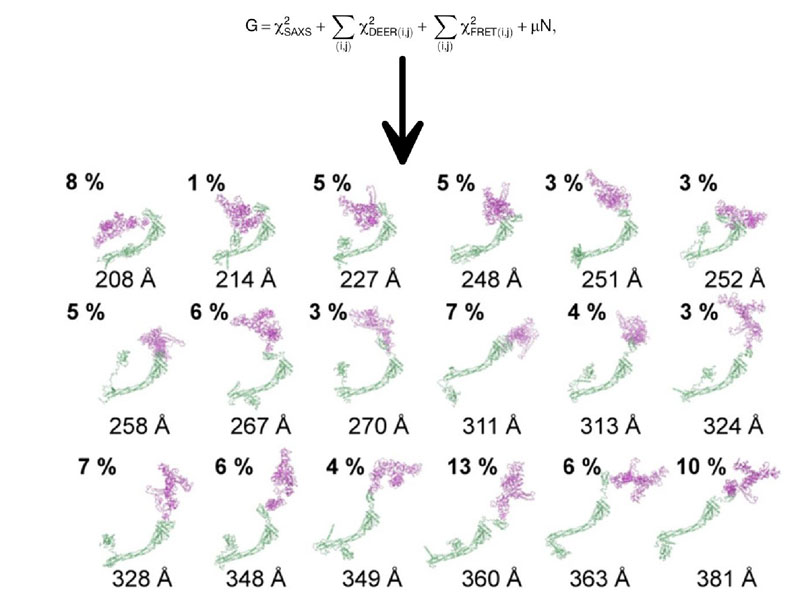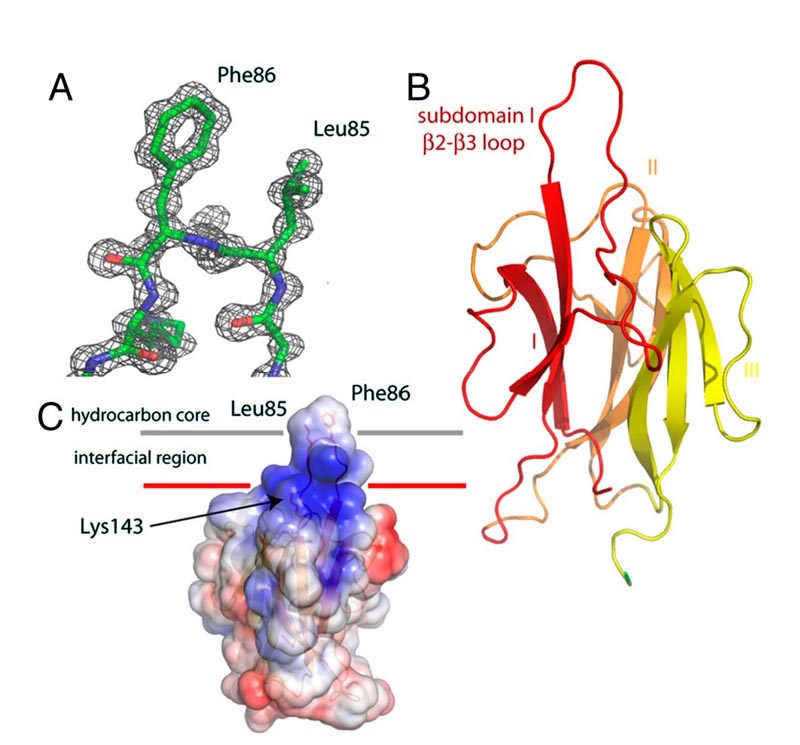
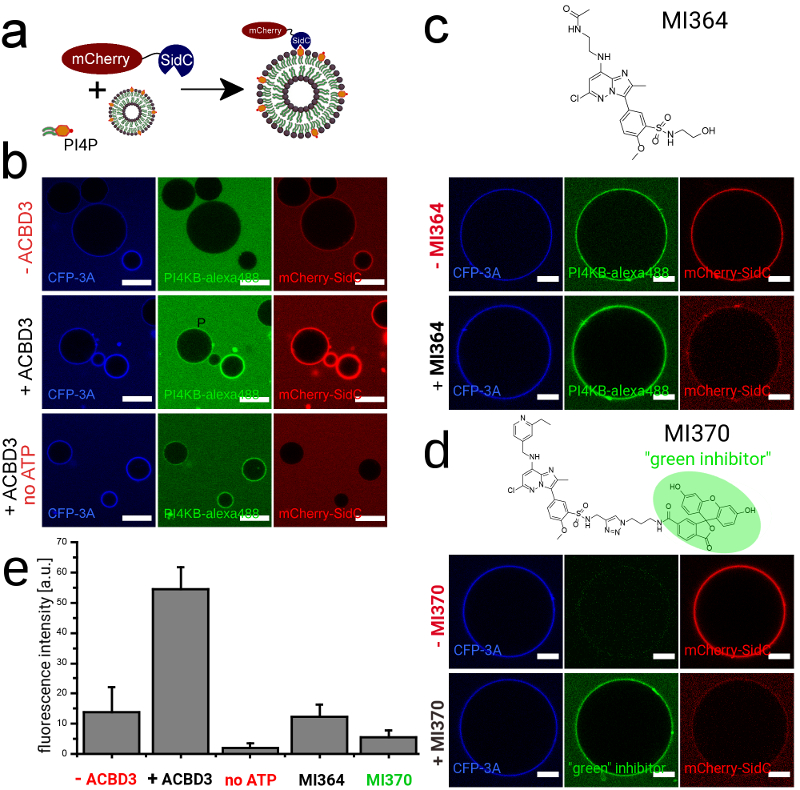
PI4KB is activated in the 3A:ACBD3:PI4KB protein complex.
(A) Scheme of the experiment. A PI4P binding domain from the Legionella pneumonia SidC protein that binds to PI4P with nanomolar affinity was fused to mCherry and used as a fluorescent PI4P biosensor. (B) Production of PI4P on the surface of GUVs. Upper panel: GUVs decorated with the viral 3A-CFP protein (250 nM) were incubated with Alexa488 labeled PI4KB (250 nM) and SidC-mCherry (100 nM) and imaged using a confocal microscope. Middle panel: As above but also ACBD3 (250 nM) was also added. Lower panel: As the middle panel but no ATP was added. The CFP-3A signal is in blue, the PI4KB-Alexa488 signal in green and the mCherry-SidC signal is in red. Representative image of three independent experiments. Scale bar = 20 μm. (C) Inhibition by the compound MI364. On the top is the chemical structure of MI364. On the bottom is a representative image of GUVs phosphorylated by Alexa488 labeled PI4KB (upper panel: without MI364, lower panel: with 5 μM MI364). The CFP-3A signal is in blue, the PI4KB-Alexa488 signal in green and the mCherry-SidC signal is in red. Representative image of three independent experiments. Scale bar = 10 μm. (D) Inhibition by the fluorescent compound MI370. On the top is the chemical structure of MI370 (the fluorescent part in highlighted in green). On the bottom is a representative image of GUVs phosphorylated by unlabeled PI4KB (upper panel: without MI370, lower panel: with 5 μM MI370). The CFP-3A signal is in blue, the MI370 signal in green and the mCherry-SidC signal is in red. Representative image of three independent experiments. Scale bar = 10 μm. (E) Quantification of PI4P production. Quantification of the intensity of fluorescence of the SidC-mCherry PI4P biosensor on the surface of GUVs was. Standard deviations are based on three independent experiments.
(Dubankova A, et al. 2017 Sci Reports)
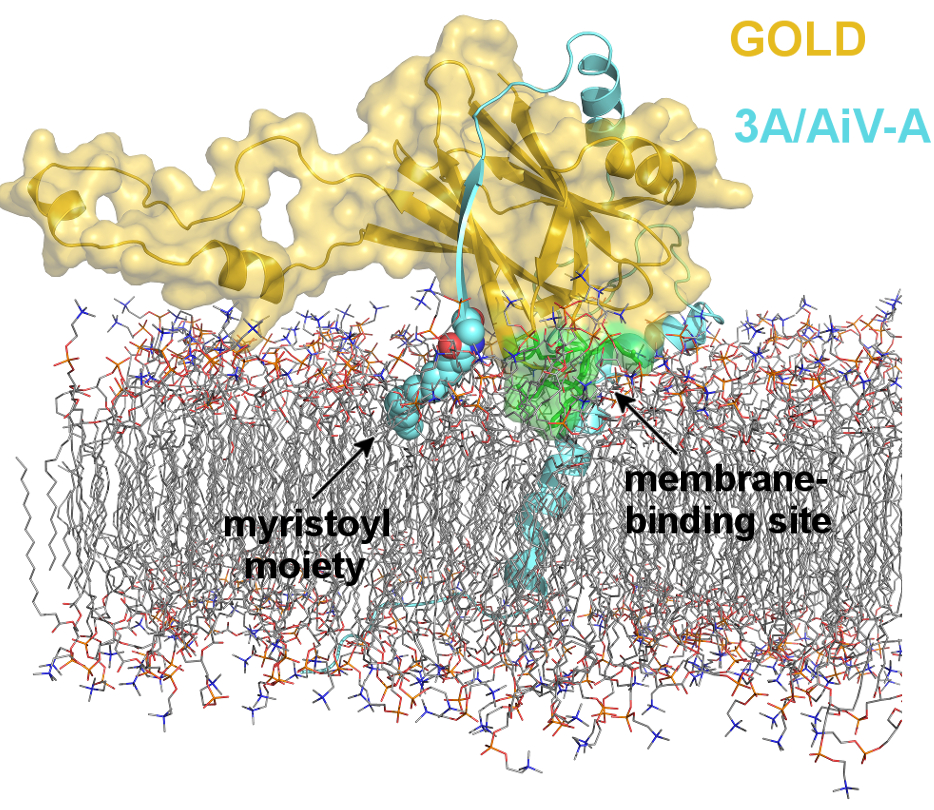
The viral 3A proteins act as molecular harnesses to enslave the ACBD3 protein leading to its stabilization at target membranes
(Klima M, et al. 2017 Structure)
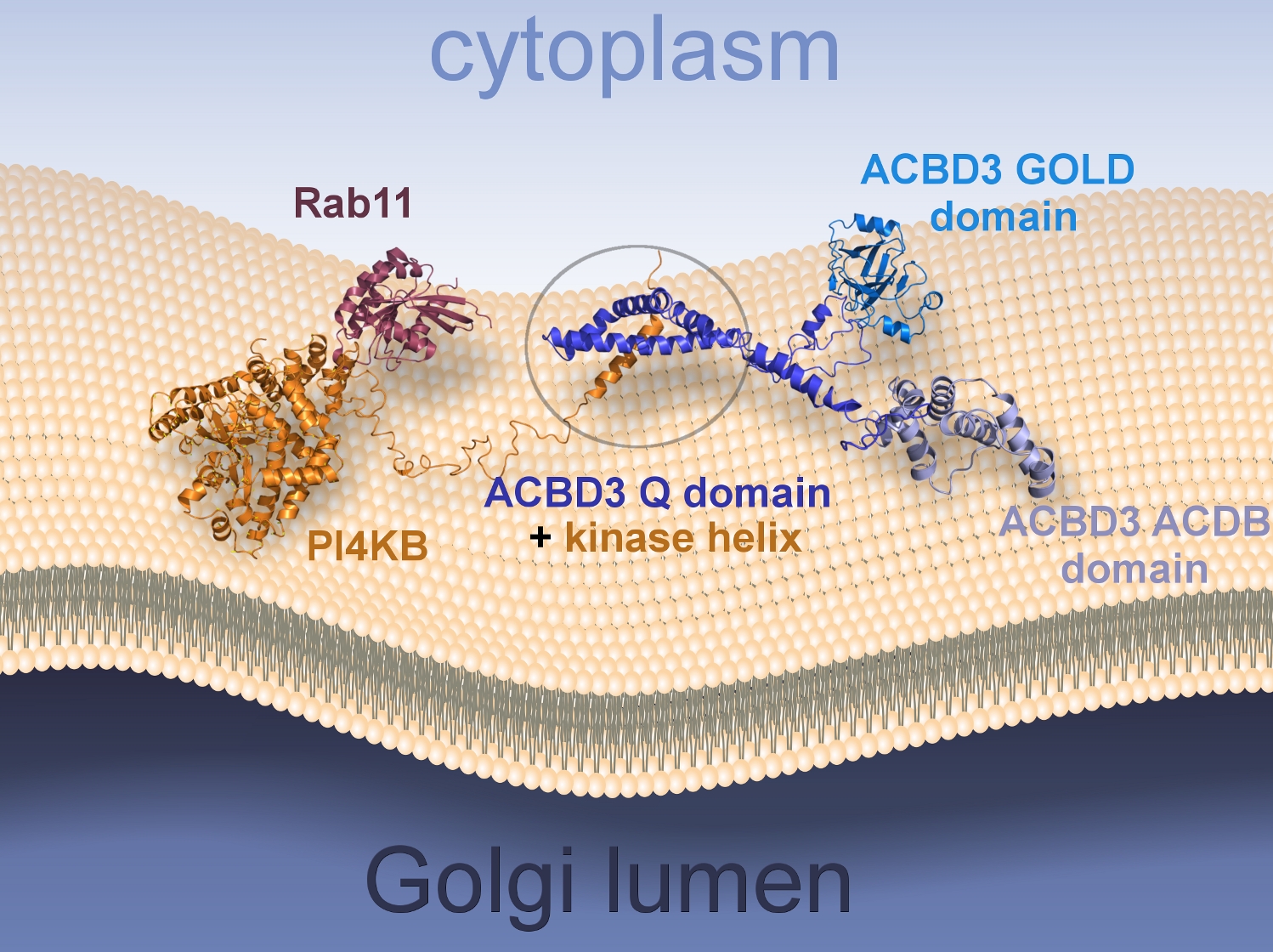
Pseudoatomic model of the PI4KB multiprotein complex assembly
The model is based on our NMR structure and a previously published crystal structure of PI4KB:Rab11 complex (PDB code 4D0L), ACBD and GOLD domain were homology modeled based on high sequence identity. The GOLD domain is tethered to the membrane by GolginB1 (also known as Giantin) which is not shown for clarity. Intrinsically disordered linkers are modeled in an arbitrary but physically plausible conformation.
(Klima M, et al. 2016 Sci Reports)
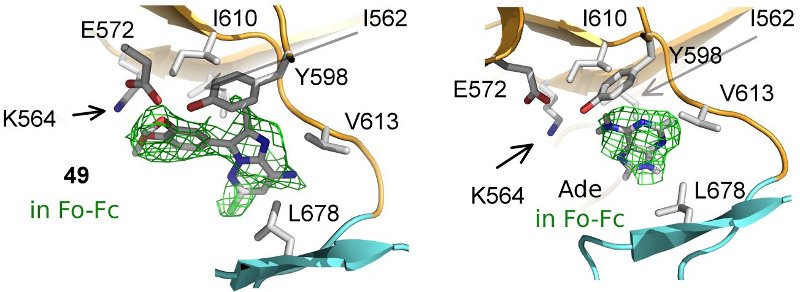
Left: Inhibitor bound in the active site of PI4K IIIβ
Right: The ATP Adenine ring in the active site of PI4K IIIβ
(Mejdrova I, et al. 2015 J Med Chem)
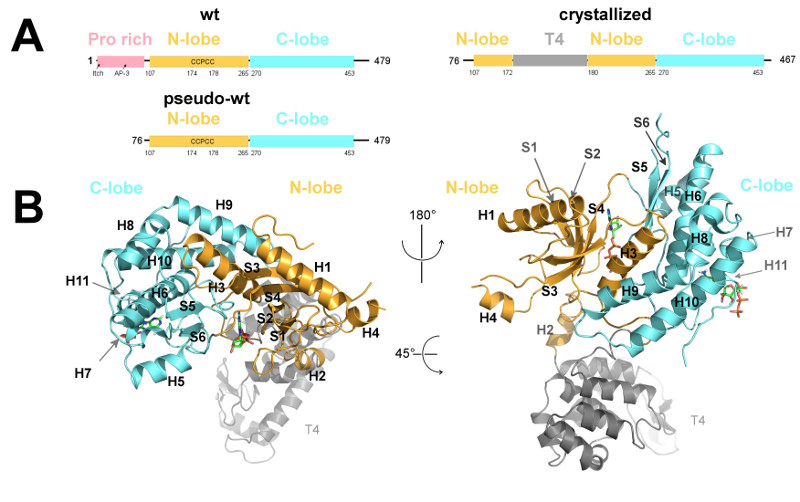
A) Wt, pseudo-wt and crystallized PI4K IIα. Binding sites for ubiquitin ligase Itch and AP3 are shown within the proline rich of the wt enzyme (left). The N-terminus is deleted in the pseudo-wt construct (lower left) used for biochemical assays. In the crystallized construct (right) the last 12 residues are deleted as well and the palmitoylated CCPCC motif is replaced with T4 lysozyme.
B) The overall fold of PI4K IIα. On the left, view oriented to show the ATP binding pocket localized between the N- and C-lobes. On the right, view rotated 180° and tilted to place T4 lysozyme in the back. The kinase has 11 α-helices (numbered H1 – H11), H1 to H4 are located in the N- lobe, where they surround two pairs of antiparallel β-sheets (S1-S4). A pair of β-sheets (S5, S6) in the C-lobe is closely surrounded by helices H5, H6 and H7, while the helices H8, H9 and H10 form a "roof". A second ATP is bound in a lateral hydrophobic pocket of the C-lobe that is partially supported by helix H11. The palmitic acid residues would occupy the loop that is replaced by the T4 lysozyme. The N-lobe is depicted in orange, the C-lobe in cyan, the T4 lysozyme in grey.
(Baumlova A, et al. 2014 EMBO Reports)
